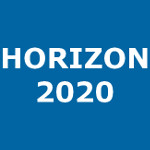An agent-based model for cell microenvironment simulation using FLAMEGPU2
Borau, C. ; Chisholm, R. ; Richmond, P. ; Walker, D.
Resumen: This work presents an advanced agent-based model developed within the FLAMEGPU2 framework, aimed at simulating the intricate dynamics of cell microenvironments. Our primary objective is to showcase FLAMEGPU2's potential in modelling critical features such as cell-cell and cell-ECM interactions, species diffusion, vascularisation, cell migration, and/or cell cycling. By doing so, we provide a versatile template that serves as a foundational platform for researchers to model specific biological mechanisms or processes. We highlight the utility of our approach as a microscale component within multiscale frameworks. Through four example applications, we demonstrate the model's versatility in capturing phenomena such as strain-stiffening behaviour of hydrogels, cell migration patterns within hydrogels, spheroid formation and fibre reorientation, and the simulation of diffusion processes within a vascularised and deformable domain. This work aims to bridge the gap between computational efficiency and biological fidelity, offering a scalable and flexible platform to advance our understanding of tissue biology and engineering.
Idioma: Inglés
DOI: 10.1016/j.compbiomed.2024.108831
Año: 2024
Publicado en: Computers in biology and medicine 179 (2024), 12 pp.
ISSN: 0010-4825
Factor impacto JCR: 6.3 (2024)
Categ. JCR: BIOLOGY rank: 7 / 107 = 0.065 (2024) - Q1 - T1
Categ. JCR: MATHEMATICAL & COMPUTATIONAL BIOLOGY rank: 4 / 67 = 0.06 (2024) - Q1 - T1
Categ. JCR: ENGINEERING, BIOMEDICAL rank: 22 / 124 = 0.177 (2024) - Q1 - T1
Categ. JCR: COMPUTER SCIENCE, INTERDISCIPLINARY APPLICATIONS rank: 26 / 175 = 0.149 (2024) - Q1 - T1
Factor impacto SCIMAGO: 1.447 - Health Informatics (Q1) - Computer Science Applications (Q1)
Financiación: info:eu-repo/grantAgreement/EC/H2020/826494/EU/PRedictive In-silico Multiscale Analytics to support cancer personalized diaGnosis and prognosis, Empowered by imaging biomarkers/PRIMAGE
Tipo y forma: Artículo (Versión definitiva)
 Debe reconocer adecuadamente la autoría, proporcionar un enlace a la licencia e indicar si se han realizado cambios. Puede hacerlo de cualquier manera razonable, pero no de una manera que sugiera que tiene el apoyo del licenciador o lo recibe por el uso que hace.
Debe reconocer adecuadamente la autoría, proporcionar un enlace a la licencia e indicar si se han realizado cambios. Puede hacerlo de cualquier manera razonable, pero no de una manera que sugiera que tiene el apoyo del licenciador o lo recibe por el uso que hace.
Exportado de SIDERAL (2025-09-22-14:43:44)
Visitas y descargas
Idioma: Inglés
DOI: 10.1016/j.compbiomed.2024.108831
Año: 2024
Publicado en: Computers in biology and medicine 179 (2024), 12 pp.
ISSN: 0010-4825
Factor impacto JCR: 6.3 (2024)
Categ. JCR: BIOLOGY rank: 7 / 107 = 0.065 (2024) - Q1 - T1
Categ. JCR: MATHEMATICAL & COMPUTATIONAL BIOLOGY rank: 4 / 67 = 0.06 (2024) - Q1 - T1
Categ. JCR: ENGINEERING, BIOMEDICAL rank: 22 / 124 = 0.177 (2024) - Q1 - T1
Categ. JCR: COMPUTER SCIENCE, INTERDISCIPLINARY APPLICATIONS rank: 26 / 175 = 0.149 (2024) - Q1 - T1
Factor impacto SCIMAGO: 1.447 - Health Informatics (Q1) - Computer Science Applications (Q1)
Financiación: info:eu-repo/grantAgreement/EC/H2020/826494/EU/PRedictive In-silico Multiscale Analytics to support cancer personalized diaGnosis and prognosis, Empowered by imaging biomarkers/PRIMAGE
Tipo y forma: Artículo (Versión definitiva)
Exportado de SIDERAL (2025-09-22-14:43:44)
Enlace permanente:
Visitas y descargas
Este artículo se encuentra en las siguientes colecciones:
Artículos
Registro creado el 2024-07-19, última modificación el 2025-09-23
